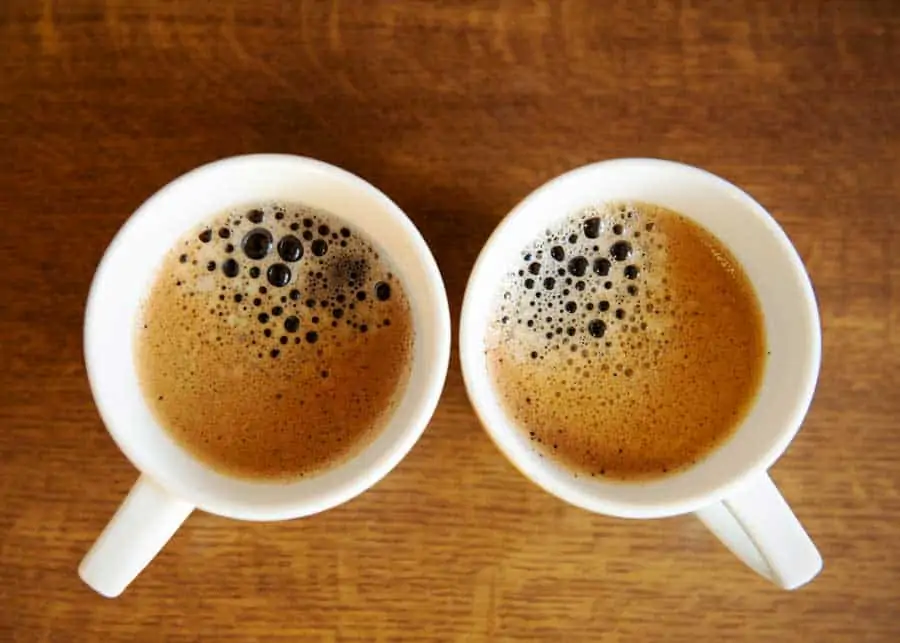You simple make a shot of espresso in a coffee mug and then top it up with hot water from a kettle. Add milk and cream to taste. You can try that and see if you like it.
Can I grind regular ground coffee for espresso?
Regrinding Coffee Grounds Will Clog Your Grinder
Most importantly, regrinding medium and coarse coffee grounds on a finer setting will likely clog your coffee grinder. The grounds won’t flow through your grinder like whole beans do, and the result won’t be espresso grounds.
Can you cook coffee beans like regular beans?
Yes, although you may not like the taste. Raw, or green, coffee beans are highly acidic and are said to have a “grassy” or “woody” flavor. They are much harder than roasted beans, making them difficult to chew. When you process a coffee bean, then the darker the roast, the softer that the beans will become.
Do you need special coffee to make espresso?
Remember: espresso can be made with any kind of coffee. “Espresso beans” and “espresso blend” just mean the roaster has created the blend specifically with espresso in mind. We suggest darker coffee roasts for espresso because they tend to taste the most consistent.
Do I have to use espresso beans to make espresso?
Conclusion. There is no difference between espresso and coffee beans. When specialty roasters write “espresso blend” or “drip blend,” it’s just the brew method roaster’s believe will make the flavor profile really shine. Coffee is a matter of personal taste and preference—you do you and make coffee the way you love.
Can you brew coffee with whole beans?
Can you make coffee with whole beans? Yes, you can make great coffee with whole beans without grinding. Whole unground coffee beans take longer to brew but the coffee has less bitterness and acidity than regular coffee. You also use more whole beans than when brewing with ground coffee.
Are raw coffee beans edible?
Eating coffee beans unroasted is completely safe, though they are harder to bite and chew than roasted beans. Furthermore, many people may not enjoy unroasted beans because of the taste. Unroasted coffee beans taste earthy and grassy and are more acidic than roasted coffee beans.
How can I use coffee beans without a grinder?
Yes, you can grind coffee beans without a grinder. You can use a blender or food processor if you don’t want to grind them by hand. To grind beans by hand, use a hammer, mortar and pestle, hand mincer, or rolling pin. With each of these methods, you can make the grind as fine or coarse as you want.
Are espresso beans and coffee beans the same?
It turns out, there is no difference between espresso and regular coffee beans. If you’re wondering why they’re labeled differently, it’s simply because of the brew method.
What beans for espresso?
Espresso Beans
- Coffee beans used to make espresso are usually of the Arabica Coffee bean varietal (Coffea arabica var.
- Espresso coffee beans are usually given a very Dark Roast, though some people do prefer lighter roasts – this is a matter of personal taste and any roast can be used in espresso making equipment.
What beans does Starbucks use for espresso?
Rather than whole bean or pre-ground coffee like you would buy in bags, Starbucks® Premium Instant Coffee is microground coffee made up of 100% arabica beans, all sourced from Latin America.
How many coffee beans does it take to make an espresso?
For a single shot: Use 6–8 grams (1.5-2 tsp) of ground beans per 1–1.5 fluid ounce (2-3 Tbsp). For a double shot: Use 15 grams (3.5 tsp)of ground beans per 2 fluid ounce (4 Tbsp). Espresso basics: Use only the freshest coffee beans.

